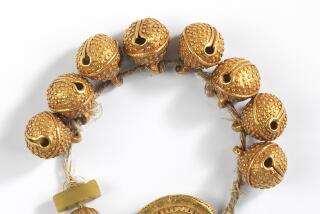Diamonds can bear taint of violence
When “Blood Diamond” came out in 2006, it raised consciousness about the stones that are used to pay for war.
The question became: Can you know when you buy a diamond that the uncut stone was conflict free?
As it turns out, nations around the globe were addressing the issue long before the movie, set in Sierra Leone during its civil war in 1999. Progress has been made, thanks largely to the Kimberley Process Certification Scheme.
“Less than 0.1% of the diamonds that are being produced today could be considered conflict diamonds,” says Cecilia Gardner, president of the Jewelers Vigilance Committee, an industry watchdog group in New York. “The underlying problem has been addressed.”
Through the Kimberley Process, the movement of rough diamonds is tracked and only those accompanied by a conflict-free certificate may move from one participating nation to another.
Vigilance is important, in part because the status of nations in the trade is fluid.
In September, the U.N. Security Council lifted a 6-year-old ban on diamond exports from Liberia, where sales and trades of the gems had helped finance a civil war that ended in 2003.
Shoppers shouldn’t be shy about raising the matter with their jewelers. For more information, visit www.diamondfacts.org.
--
Leslie Earnest






